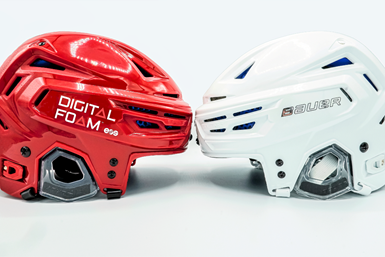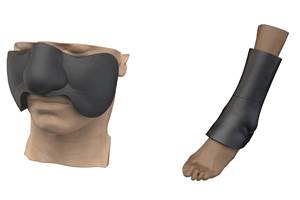EOS Launches Digital Foam Architects Network
EOS created the collaborative additive manufacturing alliance to accelerate time-to-market for 3D printed foam applications.
Share
Read Next
EOS has launched its Digital Foam Architects network, designed to accelerate the development and additive manufacturing (AM) of consumer, medical and industrial products featuring Digital Foam applications. Founding members include EOS, Arkema, General Lattice and DyeMansion.
It is said Digital Foam breathes new life into mature products, while also creating entirely new product offerings — from athletic shoes and orthotics to protective gear and medical products. The material enables manufacturers to “dial-in” exactly the performance or features they need to deliver product differentiation as well as provide mass customized product offerings.
Digital Foam applications typically have complex requirements, requiring multiple disciplines to ensure success. The Digital Foam Architects network formalizes an alliance of AM experts ready to bring ideas to production, including design software, materials and the various AM hardware elements — from printing to postprocessing and colorization.
“Digital Foam applications can be designed and produced with tailored features for performance, protection and lightweighting,” says Jon Walker, EOS government relations and key accounts manager. “But Digital Foam is not a product, rather it is an approach to 3D printing foam-like products. The Digital Foam Architects network is another chapter in the maturation of this approach by coalescing the required AM expertise. We are very pleased to announce our first commitments to this network of experts.”
Arkema says it is committed to supporting new additive manufacturing application development through more sustainable material solutions. “In collaboration with EOS, we continue to push the boundaries on what is feasible in 3D printing by combining strong enablers, such as Digital Foam, and new materials, such as Pebax elastomers,” says Adrien Lapeyre, director of Arkema 3D printing program. “We look forward to the growth of Digital Foam and we will continue to play an active role in this program.”
Underpinning Digital Foam is the EOS patent relating to any generatively 3D printed object which has a flexible grid-like structure or matrix (for example, a lattice), composed of open cells that are joined together in groups of differing characteristics. Described in basic terms, this covers any varying 3D printed lattice structures morphing into each other.
The network will expand its partners as Digital Foam continues to be leveraged as an additively manufactured flexible lattice solution.
- Read how Bauer Hockey uses EOS 3D printed digital foam for customizing helmets. The new in-store experience, combined with proprietary 3D printing technology, opens the door for personalized hockey products.
- Listen to this episode of The Cool Parts Show to hear how 3D printing will deliver tailored products. Scanning feet for their geometry and pressure enables Aetrex and EOS to manufacture insoles that are unique to individual wearers.
Related Content
3D Systems, Klarity Partner to Expand Access to Patient-Matched Radiotherapy Innovations
Klarity has added 3D Systems’ VSP Bolus to its radiotherapy solutions, enabling radiotherapy clinics in the U.S. and Canada to embrace 3D printing technology without investing in costly, time-consuming software.
Read More3D Printed Lattices Replace Foam for Customized Helmet Padding: The Cool Parts Show #62
“Digital materials” resulting from engineered flexible polymer structures made through additive manufacturing are tunable to the application and can be tailored to the head of the wearer.
Read MoreResearchers Develop Method for Creating Customized 3D Printed Metals With Contrasting Properties
Researchers were able to use 3D printing techniques and tweak printing parameters to produce a 3D printed metal with different microstructures that create stronger and weaker regions in the exact locations in the metal that they wanted.
Read MoreBauer Hockey Uses EOS 3D Printed Digital Foam for Customizing Helmets
The new in-store experience, combined with proprietary 3D printing technology, opens the door for personalized hockey products.
Read MoreRead Next
4 Ways the Education and Training Challenge Is Different for Additive Manufacturing
The advance of additive manufacturing means we need more professionals educated in AM technology.
Read MoreAt General Atomics, Do Unmanned Aerial Systems Reveal the Future of Aircraft Manufacturing?
The maker of the Predator and SkyGuardian remote aircraft can implement additive manufacturing more rapidly and widely than the makers of other types of planes. The role of 3D printing in current and future UAS components hints at how far AM can go to save cost and time in aircraft production and design.
Read More3D Printing Brings Sustainability, Accessibility to Glass Manufacturing
Australian startup Maple Glass Printing has developed a process for extruding glass into artwork, lab implements and architectural elements. Along the way, the company has also found more efficient ways of recycling this material.
Read More






















